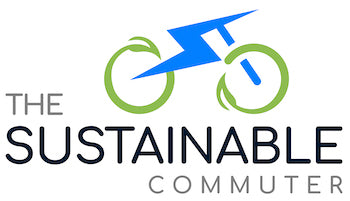
Challenges in Public Transportation Planning: A Closer Look
Share
Introduction
Public transportation planning plays a crucial role in the development and sustainability of cities and communities. It involves the design, implementation, and management of transportation systems that cater to the needs of the general public. However, this process is not without its challenges. In this blog post, we will take a closer look at some of the key challenges faced in public transportation planning and explore potential solutions to overcome them.
Funding Challenges
One of the most significant challenges in public transportation planning is securing adequate funding. Building and maintaining transportation infrastructure requires substantial financial resources. This includes the construction and maintenance of roads, bridges, train stations, bus depots, and other related facilities. Additionally, there are ongoing operational costs such as fuel, maintenance, and salaries for drivers and staff.
Insufficient funding can have a detrimental impact on the quality and efficiency of public transportation systems. It can lead to a lack of infrastructure maintenance, reduced service frequency, and outdated technology. In turn, this can result in decreased ridership and public dissatisfaction.
One real company that has successfully tackled funding challenges is the Metropolitan Transportation Authority (MTA) in New York City. The MTA has implemented various strategies to secure funding, including public-private partnerships, congestion pricing, and fare increases. By diversifying their revenue streams and actively seeking alternative sources of funding, the MTA has been able to invest in improving and expanding their transportation network.
Meeting Evolving Demands
Another major challenge in public transportation planning is meeting the evolving demands of commuters. As cities grow and populations increase, the needs and preferences of commuters change. It is essential for transportation planners to understand these changing demands and adapt their systems accordingly.
This requires ongoing research and analysis to identify gaps in existing transportation systems. For example, a city with a large population of elderly residents may require more accessible buses and trains. Similarly, a city with a growing tech industry may benefit from the integration of smart technology into their transportation systems.
One real company that has excelled in meeting evolving demands is the Singapore Mass Rapid Transit (MRT) system. The MRT has implemented various innovative solutions to cater to the needs of different commuters. They have introduced priority seating for the elderly and disabled, installed real-time information displays at stations, and implemented contactless payment systems. By continuously monitoring and responding to the changing demands of their commuters, the MRT has been able to provide a reliable and efficient transportation system.
Multi-Modal Integration
Multi-modal integration is another key challenge in public transportation planning. It involves seamlessly connecting different modes of transportation, such as buses, trains, and bicycles, to provide commuters with a convenient and efficient travel experience. This integration promotes sustainable transportation choices and reduces congestion on roads.
There are several benefits to multi-modal integration. It allows commuters to choose the most appropriate mode of transportation for their journey, whether it be cycling to a train station or taking a bus to a park-and-ride facility. It also reduces the reliance on private vehicles, leading to fewer traffic jams and reduced carbon emissions.
To promote multi-modal integration, transportation planners must develop strategies that encourage the use of different modes of transportation. This can include creating dedicated bike lanes, providing secure bicycle parking facilities at train stations, and implementing seamless ticketing systems across different modes of transportation.
One real company that has successfully implemented multi-modal solutions is Transport for London (TfL). TfL has integrated various transportation modes, including buses, trains, bicycles, and even riverboats, to provide commuters with a comprehensive and interconnected transportation network. They have implemented initiatives such as the "Boris Bikes" bicycle-sharing scheme and the Oyster card contactless payment system, making it easy for commuters to switch between different modes of transportation.
Conclusion
Public transportation planning faces numerous challenges, from funding constraints to meeting evolving demands and promoting multi-modal integration. However, these challenges can be overcome with innovative solutions and strategic planning.
By diversifying funding sources, understanding the changing needs of commuters, and promoting multi-modal integration, transportation planners can create sustainable and efficient transportation systems. Real companies such as the MTA, the Singapore MRT, and TfL have already paved the way with their successful strategies.
It is crucial for cities and communities to invest in public transportation planning and prioritize sustainable transportation options. By doing so, we can create cities that are accessible, environmentally friendly, and cater to the needs of all residents.
